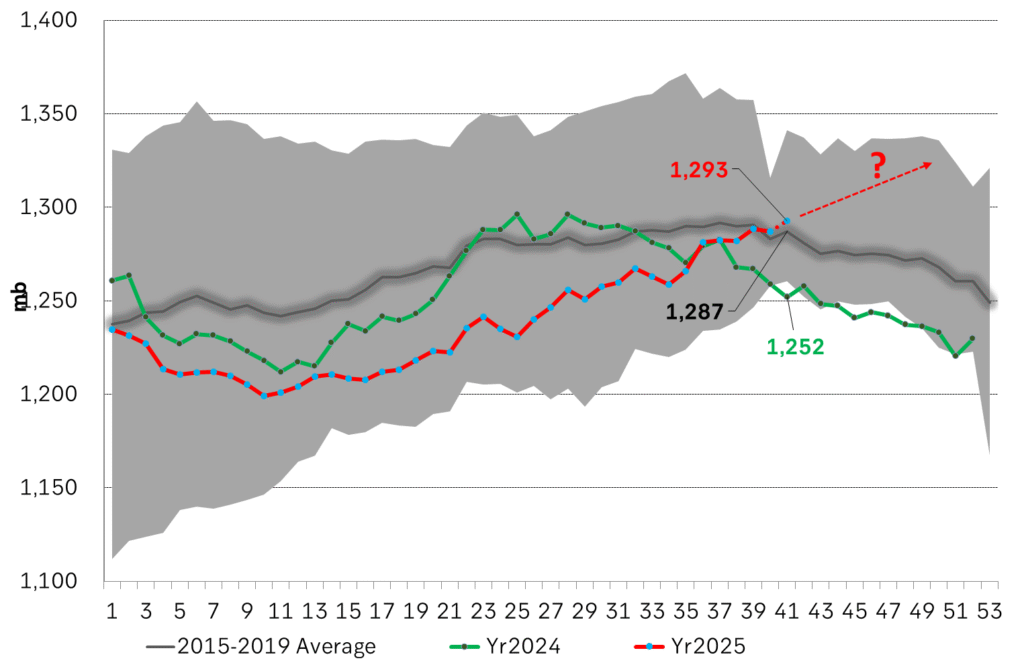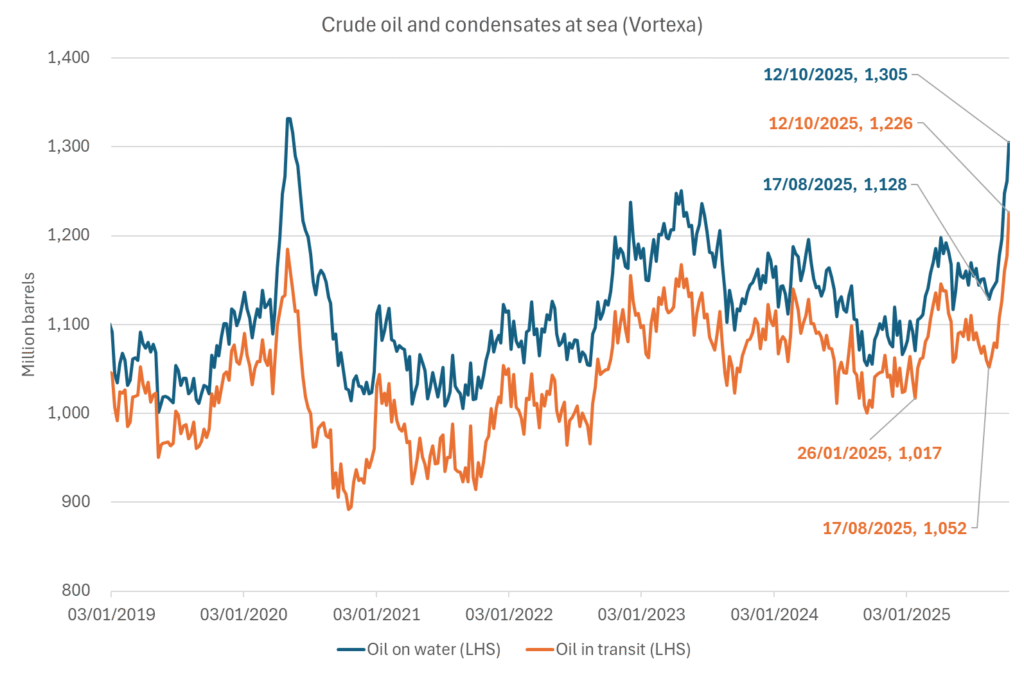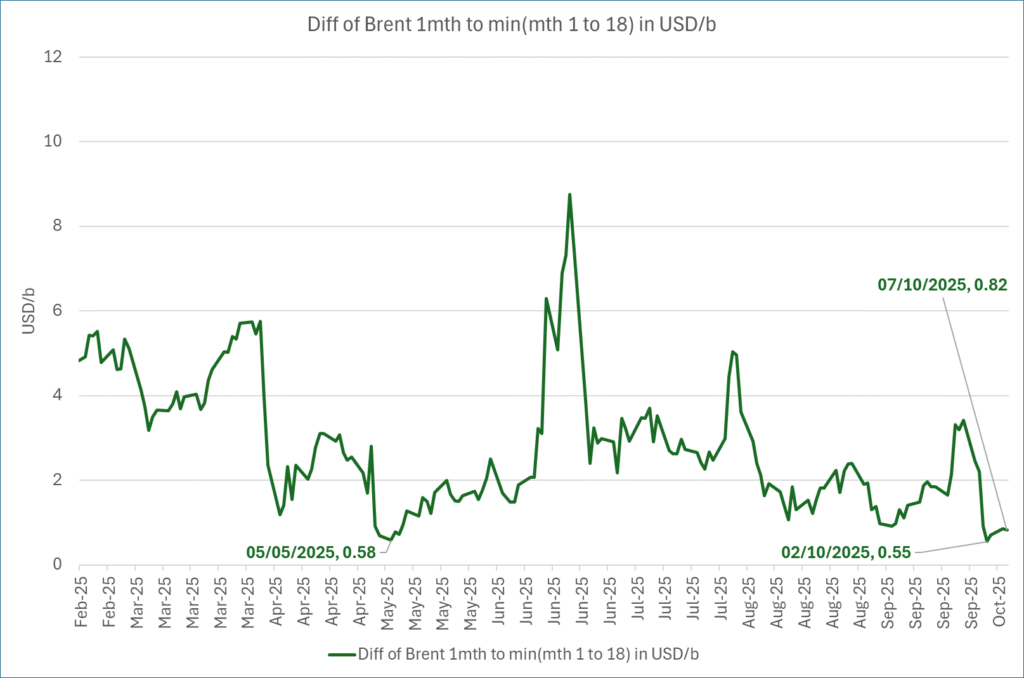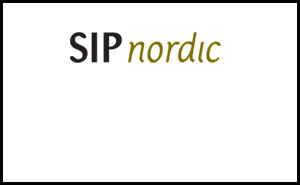Analys
SIP Nordic – Råvaruguiden – Mars 2012
 Några villor fyllda med guld
Några villor fyllda med guld
I början av 2011 publicerades en artikel om Sveriges dyraste villor som var ute till försäljning. De fyra dyraste villorna hade ett sammanlagt försäljningspris på runt 1,4 miljarder. En stor summa, men det skulle inte på långa vägar räcka till att köpa all världens guld.
Det som dock är intressant är att all världens guld skulle få plats i dessa villor. Denna månads krönika går i fysikens och matematikens tecken. Varje år produceras 50 miljoner troy ounces guld.
Trots att vi sedan urminnes tider producerat guld så antar jag att vi haft liknande produktion de senaste 110 åren. Det är självklart en siffra tagen ur luften men med tanke på aztekernas och faraonernas kärlek till guld så tror jag inte att den siffran är helt fel.
Således uppskattar jag den totala mängden tillgängligt guld till 9 miljarder troy ounce guld.
Således finns det ungefär 166 miljoner kg guld i världen. Med dagens guldpris motsvarar detta närmare 67 biljoner kronor.
Det kan låta som en otrolig stor mängd och ett astronomsikt värde men faktum är att guldet skulle kunna få plats i de fyra dyraste villorna ute till försäljning under början av förra året.
Guld har en densitet på 19,3 g/kvadratcentimeter. Detta är ekvivalent med 19,3 kg per liter. Eller 19300 kg per kubikmeter. Med en total tillgänglig mängd på 166 miljoner kg guld får vi att all världens guld upptar en volym om ca 8 600 kubikmeter. Vad detta mynnar ut i är att all världens guld ryms i en kub med sidorna 20,5 meter (20,5*20,5*20,5 = 8 600 m3).
De fyra dyraste villorna, ute till försäljning under 2011, hade en sammanlagd boyta på 2 774 kvadratmeter. Dessa fyra villor skulle alltså få plats med all världens guld (2 774* 3,1 = 8 600 m3). Att ha råd med det är en helt annan femma.
Platina – för dig med mindre boende
Världens platinaproduktion uppgår till 3,6 miljoner troy once per år. Med samma metodik som tidigare skulle all producerat platina vara värt runt 4,7 triljoner kronor. Platina har dock en högre densitet och all världens platinaproduktion är ungefär 556 kubikmeter. Detta motsvarar fyra villor på 46 kvadratmeter vardera.
Guld – Trygg hamn eller inte
- Den positiva korrelationen mellan guld och risk fortsätter.
- Guld har under februari svängt kraftigt. Guldpriset följer således den globala marknadens växlande mellan risk på och risk av, till följd av greklandskrisen.
- Den stärkta euron kontra dollar är också en starkt bidragande orsak till att guldpriset ökat. Ben Bernankes tal i slutet av månaden om långsam återhämtning gav dock guldet en liten törn
Platina
- Den positiva korrelationen med guld hjälper platina. Platina har dock utvecklats något starkare än guld under början av 2012.
- Strejken i Impala Rustenburg gruvorna i Sydafrika, världens största platina gruva, fortsätter och det kommer ta tid innan produktionen återgår till det normala.
- Strejken har lett till en ökning av platinapriset. Det har även hjälpt att minska prisskillnaderna mellan guld och platina.
Silver
- Silverpriset har under februari månad ökat och handlas nu på nivåer vi såg i september förra året. Det är dock drygt 12$ kvar till den höga noteringen 50$ under april förra året.
- Analytikerkåren är överens om att ett stigande silverpris är troligt om utsikterna för den globala ekonomin fortsätter att se mörka ut.
- Vi börjar även se att silver diskuteras flitigt utanför analyskåren – är ett liknande scenario som vi hade under våren 2011 på väg att upprepa sig?
Brent olja
- Oljan har efter en trevande start i januari både återhämtat sig och nått upp till nya höga nivåer under februari.
- Hårda väderförhållanden men framförallt ökad spänning mellan Iran och västvärlden drev oljepriset till toppen 125$ den 24 februari.
- Trots rapporter om ökad tillgång och högre produktion, kyls inte oljepriset ned. Oron i Iran och OPEC länderna bidrar till att oljan behåller sin höga kurs.
- Skillnaden mellan Brent oljan och WTI oljan ökar återigen.
Naturgas
- Naturgas närmar sig nu historiskt låga nivåer. Så pass låga att produktionskostnaderna nu närmar sig priset på naturgas.
- Medeltemperaturen har varit högre än vanligt i USA. Däremot spås tillgången av naturgas mer än halveras i USA under 2012.
- Spekulanterna är fortsatt i korta positioner (spekulerar i nedgång) men de börjar successivt köpa tillbaka sina positioner vilket kan tyda på en vändning i marknaden.
Koppar
- Koppar har börjat året starkt efter ett ursvagt 2011. Koppar har gått upp ca. 12% i år. (Att jämföra med -21% under 2011)
- Koppar är mycket konjunkturskänsligt och följer ofta negativa aktietrender. Med den positiva starten på aktiemarknaden följer även koppar med.
- Kina, världens största kopparkonsument, sänkte under februari månad bankernas reservkrav vilket påverkade koppar positivt.
Zink
- Likt koppar har zinkpriset kraftigt stigit under den första månaden av 2012.
- Den årliga konsumtionen av zink förväntas växa med 3.6% samtidigt som tillgången bara förväntas växa med 3%. Det uppskattas dock att nuvarande zinktillgång skulle räcka 7,5 veckor, 0,5 veckor längre än 2011.
- Likt andra basmetaller drivs zinkpriset av att riskaptiten nu ökar och utsikterna för den globala ekonomin är inte lika negativ som under början av året. Något som hjälper basmetallerna uppåt.
Nickel
- Nickel presterade sämst av alla basmetaller under 2011.
- Nickel har dock följt med de andra basmetallerna i den positiva uppgången under januari 2012.
- Produktionen väntas överstiga konsumtionen under 2012.
- Mängden utvunnet nickel förväntas stiga med närmare 10% under 2012.
- Trots att tillgången ökar behöver inte nickelpriset falla. Riskaptiten ökar även bland investerare vilket kan driva råvarupriserna mot högre höjder.
Socker
- Dåliga väderförhållanden i Brasilien har fått analytiker att revidera sockerskörden med nästan 20%.
- Det stigande oljepriset driver sockerpriset uppåt under februari månad. Då oljan ökar även produktionen av etanol, vilket framställs av bland annat sockerrör.
- Köparna har återigen kopplat greppet om sockret. Summan av långa och korta positioner är nu positivt vilket tyder på att spekulanter nu i en högre grad tror på et fortsatt stigande sockerpris.
Bomull
- Bomull rör sig nu sidledsgående trend.
- Viktig nivå för uppgång är 100 $/lb.
- Trots extrem torka i USA har goda skördar i Kina och Indien täckt upp detta bortfall. Skördarna i Kina anses dock bli mindre varför Kina kan vara tvungna att importera bomull. Något som skulle kunna driva bomullspriset över 100$/lb.
- Australien har reviderat ner sin skörd på grund av dåliga väderförhållanden.
Majs
- USDA justerade, i början av året, ned sin prognos för den Argentinska skörden. Från tidigare 29 miljoner ton till 26 miljoner ton. Nu ser det ut som att dåliga väderförhållanden fortsatt kan sätta käppar i hjulet för den argentinska skörden.
- Majs konsoliderar mellan 580 och 670 cent /bushel. Nu börjar majs närma sig motståndet på 670 cent. Frågan är om det bryter upp eller vänder ned.
Vete
- Den globala produktionen av vete spås stiga med 5.3% under första halvåret 2012, samtidigt som efterfrågan endast kommer att öka 3.3%, med ett totalt överskott om 10 miljoner ton.
- Vete har tappat närmre 25% under de senaste året men fortfarande är priset på ca. 6,5 dollar tillräckligt attraktivt för att bönder ska fortsätta plantera. Ett ökande överskott är således att vänta.
- Kalla väderförhållanden i Ukraina kan komma att påverka vetepriset positivt. Nettopositionen, dvs summan av köpare och säljare, är fortsatt negativ. Säljarna har alltså fortfarande grepp om vetet.
Apelsinjuice
- Apelsinjuice har stigit med hela 220% sedan 2009.
- Senaste månaden har priset på apelsinjuice ökat kraftigt till följd av att USDA kan komma att förbjuda import av brasilianskt koncentrat. Svampbekämpningsmedel används flitigt i Brasilien men är förbjudet i USA.
- Skörden spås dock bli väldigt god i Florida samtidigt som rapporter visar att efterfrågan på apelsinjuice minskar.
[box]Denna uppdatering är producerat av SIP Nordic och publiceras i samarbete och med tillstånd på Råvarumarknaden.se[/box]
Ansvarsbegränsning
Detta produktblad utgör endast marknadsföring och har sammanställts av SIP Nordic Fondkommission AB.
Innehållet ger inte fullständig information avseende det finansiella instrumentet. Investerare uppmanas att del av prospekt och slutliga villkor, vilka finns tillgängliga på: www.rbsbank.se/markets, innan ett investeringsbeslut tas.
Förekommande exempel är simulerade och baseras på SIP Nordics egna beräkningar och antaganden, en person som använder andra data eller antaganden kan nå andra resultat. Administrativa avgifter och transaktionsavgifter påverkar den faktiska avkastningen.
Analys
Crude oil soon coming to a port near you

Rebounding along with most markets. But concerns over solidity of Gaza peace may also contribute. Brent crude fell 0.8% yesterday to $61.91/b and its lowest close since May this year. This morning it is bouncing up 0.9% to $62.5/b along with a softer USD amid positive sentiment with both equities and industrial metals moving higher. Concerns that the peace in Gaza may be less solid than what one might hope for also yields some support to Brent. Bets on tech stocks are rebounding, defying fears of trade war. Money moving back into markets. Gold continues upwards its strong trend and a softer dollar helps it higher today as well.

US crude & products probably rose 5.6 mb last week (API) versus a normal seasonal decline of 2.4 mb. The US API last night partial and thus indicative data for US oil inventories. Their data indicates that US crude stocks rose 7.4 mb last week, gasoline stocks rose 3.0 mb while Distillate stocks fell 4.8 mb. Altogether an increase in commercial crude and product stocks of 5.6 mb. Commercial US crude and product stocks normally decline by 2.4 mb this time of year. So seasonally adjusted the US inventories rose 8 mb last week according to the indicative numbers by the API. That is a lot. Also, the counter seasonal trend of rising stocks versus normally declining stocks this time of year looks on a solid pace of continuation. If the API is correct then total US crude and product stocks would stand 41 mb higher than one year ago and 6 mb higher than the 2015-19 average. And if we combine this with our knowledge of a sharp increase in production and exports by OPEC(+) and a large increase in oil at sea, then the current trend in US oil inventories looks set to continue. So higher stocks and lower crude oil prices until OPEC(+) switch to cuts. Actual US oil inventory data today at 18:00 CET.
US commercial crude and product stocks rising to 1293 mb in week 41 if last nights indicative numbers from API are correct.

Crude oil soon coming to a port near you. OPEC has lifted production sharply higher this autumn. At the same time demand for oil in the Middle-East has fallen as we have moved out of summer heat and crude oil burn for power for air-conditioning. The Middle-East oil producers have thus been able to lift exports higher on both accounts. Crude oil and condensates on water has shot up by 177 mb since mid-August. This oil is now on its way to ports around the world. And when they arrive, it will likely help to lift stocks onshore higher. That is probably when we will lose the last bit of front-end backwardation the the crude oil curves. That will help to drive the front-month Brent crude oil price down to the $60/b line and revisit the high $50ies/b. Then the eyes will be all back on OPEC+ when they meet in early November and then again in early December.
Crude oil and condensates at sea have moved straight up by 177 mb since mid-August as OPEC(+) has produced more, consumed less and exported more.

Analys
The Mid-East anchor dragging crude oil lower

When it starts to move lower it moves rather quickly. Gaza, China, IEA. Brent crude is down 2.1% today to $62/b after having traded as high as $66.58/b last Thursday and above $70/b in late September. The sell-off follows the truce/peace in Gaze, a flareup in US-China trade and yet another bearish oil outlook from the IEA.

A lasting peace in Gaze could drive crude oil at sea to onshore stocks. A lasting peace in Gaza would probably calm down the Houthis and thus allow more normal shipments of crude oil to sail through the Suez Canal, the Red Sea and out through the Bab-el-Mandeb Strait. Crude oil at sea has risen from 48 mb in April to now 91 mb versus a pre-Covid normal of about 50-60 mb. The rise to 91 mb is probably the result of crude sailing around Africa to be shot to pieces by the Houthis. If sailings were to normalize through the Suez Canal, then it could free up some 40 mb in transit at sea moving onshore into stocks.
The US-China trade conflict is of course bearish for demand if it continues.
Bearish IEA yet again. Getting closer to 2026. Credibility rises. We expect OPEC to cut end of 2025. The bearish monthly report from the IEA is what it is, but the closer we get to 2026, the more likely the IEA is of being ball-park right in its outlook. In its monthly report today the IEA estimates that the need for crude oil from OPEC in 2026 will be 25.4 mb/d versus production by the group in September of 29.1 mb/d. The group thus needs to do some serious cutting at the end of 2025 if it wants to keep the market balanced and avoid inventories from skyrocketing. Given that IEA is correct that is. We do however expect OPEC to implement cuts to avoid a large increase in inventories in Q1-26. The group will probably revert to cuts either at its early December meeting when they discuss production for January or in early January when they discuss production for February. The oil price will likely head yet lower until the group reverts to cuts.
Dubai: The Mid-East anchor dragging crude oil lower. Surplus emerging in Mid-East pricing. Crude oil prices held surprisingly strong all through the summer. A sign and a key source of that strength came from the strength in the front-end backwardation of the Dubai crude oil curve. It held out strong from mid-June and all until late September with an average 1-3mth time-spread premium of $1.8/b from mid-June to end of September. The 1-3mth time-spreads for Brent and WTI however were in steady deterioration from late June while their flat prices probably were held up by the strength coming from the Persian Gulf. Then in late September the strength in the Dubai curve suddenly collapsed. Since the start of October it has been weaker than both the Brent and the WTI curves. The Dubai 1-3mth time-spread now only stands at $0.25/b. The Middle East is now exporting more as it is producing more and also consuming less following elevated summer crude burn for power (Aircon) etc.
The only bear-element missing is a sudden and solid rise in OECD stocks. The only thing that is missing for the bear-case everyone have been waiting for is a solid, visible rise in OECD stocks in general and US oil stocks specifically. So watch out for US API indications tomorrow and official US oil inventories on Thursday.
No sign of any kind of fire-sale of oil from Saudi Arabia yet. To what we can see, Saudi Arabia is not at all struggling to sell its oil. It only lowered its Official Selling Prices (OSPs) to Asia marginally for November. A surplus market + Saudi determination to sell its oil to the market would normally lead to a sharp lowering of Saudi OSPs to Asia. Not yet at least and not for November.
The 5yr contract close to fixed at $68/b. Of importance with respect to how far down oil can/will go. When the oil market moves into a surplus then the spot price starts to trade in a large discount to the 5yr contract. Typically $10-15/b below the 5yr contract on average in bear-years (2009, 2015, 2016, 2020). But the 5yr contract is usually pulled lower as well thus making this approach a moving target. But the 5yr contract price has now been rock solidly been pegged to $68/b since 2022. And in the 2022 bull-year (Brent spot average $99/b), the 5yr contract only went to $72/b on average. If we assume that the same goes for the downside and that 2026 is a bear-year then the 5yr goes to $64/b while the spot is trading at a $10-15/b discount to that. That would imply an average spot price next year of $49-54/b. But that is if OPEC doesn’t revert to cuts and instead keeps production flowing. We think OPEC(+) will trim/cut production as needed into 2026 to prevent a huge build-up in global oil stocks and a crash in prices. But for now we are still heading lower. Into the $50ies/b.
Analys
More weakness and lower price levels ahead, but the world won’t drown in oil in 2026

Some rebound but not much. Brent crude rebounded 1.5% yesterday to $65.47/b. This morning it is inching 0.2% up to $65.6/b. The lowest close last week was on Thursday at $64.11/b.

The curve structure is almost as week as it was before the weekend. The rebound we now have gotten post the message from OPEC+ over the weekend is to a large degree a rebound along the curve rather than much strengthening at the front-end of the curve. That part of the curve structure is almost as weak as it was last Thursday.
We are still on a weakening path. The message from OPEC+ over the weekend was we are still on a weakening path with rising supply from the group. It is just not as rapidly weakening as was feared ahead of the weekend when a quota hike of 500 kb/d/mth for November was discussed.
The Brent curve is on its way to full contango with Brent dipping into the $50ies/b. Thus the ongoing weakening we have had in the crude curve since the start of the year, and especially since early June, will continue until the Brent crude oil forward curve is in full contango along with visibly rising US and OECD oil inventories. The front-month Brent contract will then flip down towards the $60/b-line and below into the $50ies/b.
At what point will OPEC+ turn to cuts? The big question then becomes: When will OPEC+ turn around to make some cuts? At what (price) point will they choose to stabilize the market? Because for sure they will. Higher oil inventories, some more shedding of drilling rigs in US shale and Brent into the 50ies somewhere is probably where the group will step in.
There is nothing we have seen from the group so far which indicates that they will close their eyes, let the world drown in oil and the oil price crash to $40/b or below.
The message from OPEC+ is also about balance and stability. The world won’t drown in oil in 2026. The message from the group as far as we manage to interpret it is twofold: 1) Taking back market share which requires a lower price for non-OPEC+ to back off a bit, and 2) Oil market stability and balance. It is not just about 1. Thus fretting about how we are all going to drown in oil in 2026 is totally off the mark by just focusing on point 1.
When to buy cal 2026? Before Christmas when Brent hits $55/b and before OPEC+ holds its last meeting of the year which is likely to be in early December.
Brent crude oil prices have rebounded a bit along the forward curve. Not much strengthening in the structure of the curve. The front-end backwardation is not much stronger today than on its weakest level so far this year which was on Thursday last week.

The front-end backwardation fell to its weakest level so far this year on Thursday last week. A slight pickup yesterday and today, but still very close to the weakest year to date. More oil from OPEC+ in the coming months and softer demand and rising inventories. We are heading for yet softer levels.

-

 Nyheter3 veckor sedan
Nyheter3 veckor sedanOPEC+ missar produktionsmål, stöder oljepriserna
-

 Nyheter4 veckor sedan
Nyheter4 veckor sedanEtt samtal om guld, olja, fjärrvärme och förnybar energi
-

 Nyheter2 veckor sedan
Nyheter2 veckor sedanGoldman Sachs höjer prognosen för guld, tror priset når 4900 USD
-

 Nyheter2 veckor sedan
Nyheter2 veckor sedanGuld nära 4000 USD och silver 50 USD, därför kan de fortsätta stiga
-

 Analys3 veckor sedan
Analys3 veckor sedanAre Ukraine’s attacks on Russian energy infrastructure working?
-

 Nyheter2 veckor sedan
Nyheter2 veckor sedanBlykalla och amerikanska Oklo inleder ett samarbete
-

 Nyheter4 veckor sedan
Nyheter4 veckor sedanGuldpriset uppe på nya höjder, nu 3750 USD
-

 Nyheter3 veckor sedan
Nyheter3 veckor sedanEtt samtal om guld, olja, koppar och stål




















